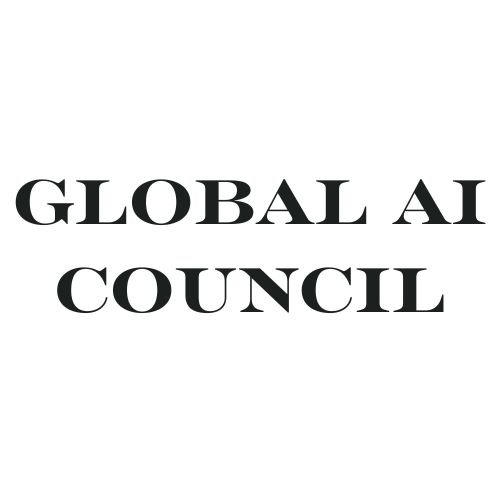Harmony in the Binary Symphony: Understanding the Complex Dance of AI and Human Acceptance
The Symbiotic Dance of AI and Human Acceptance
In the evolving landscape of technology, the integration of artificial intelligence (AI) has ushered in a new era of possibilities and challenges. As machines become increasingly intelligent, the dynamics of human acceptance play a pivotal role in shaping the trajectory of AI development. This in-depth exploration navigates the intricate relationship between AI and human acceptance, unraveling the factors, nuances, and implications that define this complex dance of innovation and apprehension.
1. The Evolution of Human-Machine Interaction: From Distrust to Integration
The blog begins with a historical overview, tracing the evolution of human-machine interaction. From the early days of skepticism towards machines to the current era of AI integration, understanding the trajectory of acceptance provides insights into the factors that have shaped perceptions and expectations. The narrative explores pivotal moments in technological history that have influenced the way society embraces AI today.
2. The Cognitive Gap: Bridging Understanding Between Humans and Machines
At the core of the AI-human relationship lies a cognitive gap — the difference in how humans and machines process information and make decisions. The blog delves into the challenges and opportunities presented by this gap, exploring efforts to enhance AI explainability, transparency, and interpretability. Bridging this cognitive divide is crucial for fostering trust and acceptance in AI technologies.
3. AI in Everyday Life: From Assistants to Companions
As AI infiltrates daily life, acceptance becomes intertwined with familiarity. The blog explores the integration of AI in everyday scenarios, from virtual assistants streamlining tasks to AI-driven recommendations shaping user experiences. The seamless assimilation of AI into daily routines highlights the importance of positive experiences in shaping human acceptance.
4. Ethical Considerations: Navigating the Moral Landscape of AI Acceptance
The ethical dimensions of AI acceptance take center stage in this section. The blog examines the ethical considerations surrounding AI, including issues of bias, privacy, and accountability. As society grapples with the ethical implications of AI technologies, navigating this moral landscape becomes integral to ensuring widespread acceptance and responsible AI development.
5. Perception vs. Reality: Unraveling Misconceptions About AI
Misconceptions about AI abound, ranging from fears of job displacement to concerns about autonomous decision-making. The blog dissects common misconceptions, offering clarity on the realities of AI technologies. By addressing and dispelling myths, a more informed and nuanced perception of AI can emerge, fostering a foundation for acceptance grounded in reality.
6. Human-Centric AI Design: Shaping Technology Around Human Needs
The human-centric approach to AI design emerges as a key factor in driving acceptance. The blog explores the principles of designing AI systems with a focus on user experience, accessibility, and inclusivity. By aligning AI development with human needs and preferences, designers can create technologies that resonate with users, facilitating a smoother acceptance curve.
7. Education and AI Literacy: Empowering Users Through Knowledge
AI literacy becomes a cornerstone in fostering acceptance. The blog delves into the role of education in empowering individuals with the knowledge and skills needed to understand, interact with, and benefit from AI technologies. As AI literacy becomes a fundamental aspect of digital education, users can navigate the technological landscape with confidence and informed decision-making.
8. Trust and Explainability: Building the Foundation for Acceptance
Trust is a linchpin in the relationship between humans and AI. The blog explores the elements that contribute to building trust, with a spotlight on the explainability of AI systems. Transparent and interpretable AI models become essential in gaining user trust, as individuals seek to understand the decision-making processes of intelligent machines.
9. Cultural Variances: Acceptance Across Global Perspectives
Acceptance of AI technologies varies across cultural contexts. The blog investigates the influence of cultural nuances on the adoption and perception of AI. By exploring case studies and examples from different regions, the narrative highlights the need for culturally sensitive AI design and implementation to ensure acceptance on a global scale.
**10. AI in Sensitive Domains: Healthcare, Finance, and Legal Implications
Certain domains, such as healthcare, finance, and legal sectors, carry heightened sensitivities regarding AI acceptance. The blog delves into the unique considerations and challenges posed by AI implementation in these critical areas. Privacy concerns, ethical dilemmas, and regulatory frameworks become focal points in navigating acceptance within these industries.
11. The Role of Regulation: Shaping Acceptance Through Policy
Regulatory frameworks play a crucial role in shaping the acceptance of AI. The blog examines the current landscape of AI regulations, exploring how policy frameworks influence the development and deployment of AI technologies. The delicate balance between fostering innovation and safeguarding ethical standards becomes evident as societies grapple with the need for comprehensive AI regulations.
Conclusion: The Harmonious Future of AI and Human Acceptance
As the blog concludes, it envisions a future where AI and human acceptance harmoniously coexist. By addressing cognitive gaps, fostering ethical AI practices, promoting education, and respecting cultural variances, the dance between humans and AI can evolve into a symphony of innovation and understanding. The narrative underscores the collective responsibility of researchers, developers, policymakers, and users in shaping an AI landscape that is not only advanced but also embraced by humanity.
